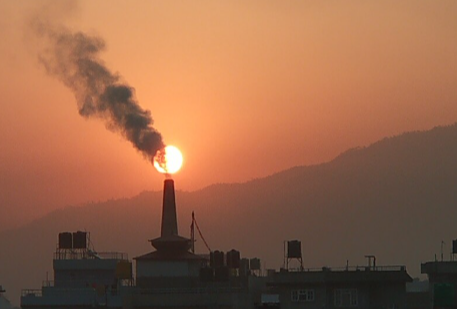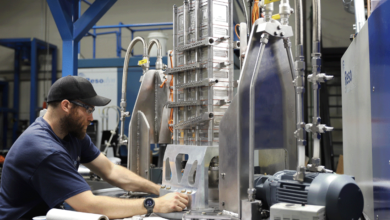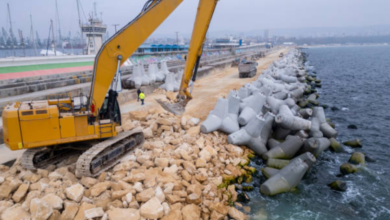Top Air Pollutants: What’s Really Polluting Our Atmosphere?

Air pollution is one of the most pressing environmental challenges facing the world today. Though often invisible to the naked eye, harmful pollutants in the air can have profound effects on human health, ecosystems, and the climate. Understanding the top air pollutants is crucial for raising awareness and taking action to protect both ourselves and the planet. In this blog, we’ll explore the main culprits behind air pollution, their sources, and the impacts they have on our atmosphere.
What Are Air Pollutants?
Air pollutants are substances in the air that can cause harm to humans, animals, plants, and the environment. They can be in the form of gases, particles, or biological molecules. Pollutants enter the atmosphere through natural processes such as wildfires and volcanic eruptions, but most come from human activities like industrial production, transportation, and agriculture.
The Top Air Pollutants
1. Particulate Matter (PM2.5 and PM10)
Particulate matter refers to tiny particles or droplets suspended in the air. These particles vary in size, but the most harmful ones are PM2.5 (particles smaller than 2.5 micrometers) and PM10 (smaller than 10 micrometers). Because of their small size, these particles can penetrate deep into the lungs and even enter the bloodstream, causing respiratory and cardiovascular diseases.
Sources: Combustion of fossil fuels in vehicles and power plants, construction sites, agricultural activities, and wildfires.
2. Nitrogen Oxides (NOx)
Nitrogen oxides are a group of gases that primarily form when fuel is burned at high temperatures. They contribute to the formation of ground-level ozone and smog, which impair lung function and worsen asthma.
Sources: Vehicle engines, power plants, industrial facilities, and agricultural soil management.
3. Sulfur Dioxide (SO2)
Sulfur dioxide is a gas that results from burning fossil fuels like coal and oil that contain sulfur compounds. SO2 can react in the atmosphere to form fine particles and acid rain, damaging forests, soils, and aquatic habitats.
Sources: Coal-fired power plants, industrial processes, and volcanic activity.
4. Carbon Monoxide (CO)
Carbon monoxide is a colorless, odorless gas that is highly toxic. It binds with hemoglobin in the blood, reducing oxygen delivery to the body’s organs and tissues. High levels of CO can cause headaches, dizziness, and even death in extreme cases.
Sources: Vehicle exhaust, residential heating, and incomplete combustion of fossil fuels.
5. Ozone (O3) – Ground-Level Ozone
While ozone in the upper atmosphere protects life from harmful ultraviolet rays, ground-level ozone is a harmful air pollutant. It forms when nitrogen oxides and volatile organic compounds (VOCs) react in sunlight. Ozone irritates the respiratory system and reduces lung function.
Sources: Emissions from cars, factories, and chemical solvents.
6. Volatile Organic Compounds (VOCs)
VOCs are a large group of organic chemicals that easily evaporate at room temperature. Many VOCs contribute to the formation of ground-level ozone and smog. Some VOCs are also directly harmful and can cause eye, nose, and throat irritation.
Sources: Paints, cleaning products, gasoline vapors, and industrial emissions.
7. Lead (Pb)
Though lead emissions have dramatically decreased due to regulations banning leaded gasoline, it remains a dangerous pollutant. Lead can accumulate in the body and cause neurological damage, especially in children.
Sources: Industrial processes, battery manufacturing, and contaminated soil or dust.
Read Also: tech elite exploration initiative
Why Should We Care About These Pollutants?
The health effects of air pollution are well-documented. Exposure to high levels of pollutants like particulate matter, nitrogen oxides, and ozone is linked to respiratory diseases (such as asthma and bronchitis), heart disease, stroke, and premature death. Vulnerable groups, including children, the elderly, and those with pre-existing health conditions, are especially at risk.
Beyond human health, air pollutants harm the environment. Acid rain from sulfur dioxide damages forests and lakes, while ground-level ozone affects plant growth and crop yields. Many pollutants also contribute to climate change by trapping heat in the atmosphere.
How Can We Reduce Air Pollution?
Addressing air pollution requires a mix of policy action, technological innovation, and personal responsibility.
- Transition to Clean Energy: Reducing reliance on coal and oil by embracing renewable energy sources like solar and wind can cut emissions drastically.
- Improve Transportation: Encouraging the use of electric vehicles, public transit, biking, and walking helps lower emissions from cars and trucks. Additionally, participating in Provo’s regular vehicle emissions testing programs ensures that cars on the road meet environmental standards and contribute to cleaner air.
- Industrial Controls: Implementing stricter emission standards and pollution control technologies in factories and power plants helps reduce industrial pollution.
- Reduce VOCs: Using low-VOC products at home and in industry lowers the amount of these pollutants released.
- Public Awareness: Educating communities about pollution sources and health impacts can encourage behavior changes that protect air quality.
Final Thoughts
Air pollution remains a global challenge, but understanding the top pollutants and their sources is the first step toward cleaner air and healthier lives. Each of us can contribute by making mindful choices about energy use, transportation, and product consumption. Together, we can clear the air and protect the atmosphere for generations to come.




